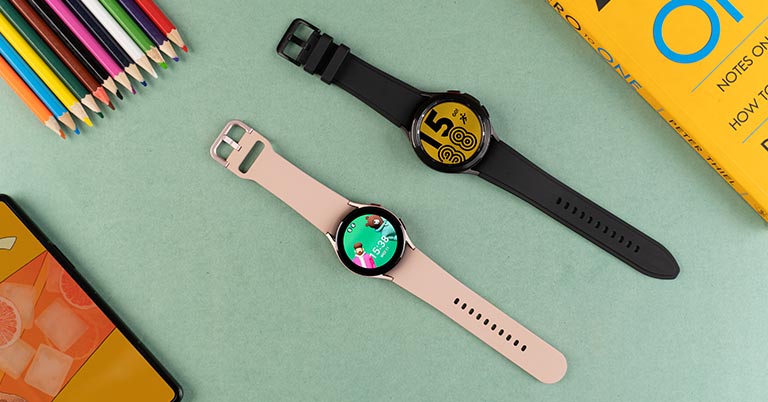
Back in May this year, Google revealed that it had been working with Samsung in developing a reimagined version of Wear OS for Android smartwatches. As expected, Samsung was the first to show off the new Wear OS-powered smartwatches with its Galaxy Watch 4 series. And it won’t come as a surprise when I say that these are some of the most exciting smartwatches to grace the market in recent times. More on our review of the Samsung Galaxy Watch 4 and Watch 4 Classic.
Samsung Galaxy Watch 4, Watch 4 Classic Specifications:
| Watch 4 | Watch 4 Classic | ||
| Dimensions & Weight | Aluminum case – 44mm: 44.4×43.3×9.8mm | 30.3gm – 40mm: 40.4×39.3×9.8mm | 25.9gm |
Stainless steel case – 46mm: 45.5×45.5×11.0mm | 52gm – 42mm: 41.5×41.5×11.2mm | 46.5gm |
|
| Color | – 44mm: Black, Green, Silver – 40mm: Black, Pink Gold, Silver |
– 46mm: Black, Silver – 42mm: Black Silver |
|
| Display | – 44mm: 1.4” (450 x 450 px) – 40mm: 1.2” (396 x 396 px) |
– 46mm: 1.4” (450 x 450 px) – 42mm: 1.2” (396 x 396 px) |
|
| Protection | Corning Gorilla Glass DX+ | Corning Gorilla Glass DX | |
| Properties | Super AMOLED panel, Always on Display (AoD) | ||
| Processor | Exynos W920 (5nm), 2x Cortex-A55 cores (1.18GHz) | ||
| Memory | 1.5GB RAM, 16GB internal storage | ||
| Battery | 44/46mm: 361mAh | 40/42mm: 247mAh | ||
| Charging | WPC-based wireless charging | ||
| OS | Wear OS Powered by Samsung (Wear OS 3) | ||
| UI | One UI Watch 3 | ||
| Sensors | Samsung BioActive Sensor (Optical Heart Rate + Electrical Heart + Bioelectrical Impedance Analysis), Accelerometer, Barometer, Gyro, Geomagnetic, Light | ||
| Connectivity | Bluetooth 5.0, WiFi a/b/g/n (dual-band), NFC, LTE | ||
| Navigation | GPS / Glonass / Beidou / Galileo | ||
| Durability | 5 ATM + IP68 certified | MIL-STD-810G compliant | ||
| Compatibility | Android 6.0 or higher, With more than 1.5GB RAM | ||
| Companion App | Setup: Galaxy Wearable, Galaxy Watch4 Plugin Health Statistics: Samsung Health |
||
| Price in Nepal | 40mm: Rs. 34,999 44mm: Rs. 36,999 |
42mm: Rs. 46,999 46mm: Rs. 49,999 |
|
Samsung Galaxy Watch 4, Watch 4 Classic Review:
Design
- Aluminum / Stainless steel case
- 20mm (universal) silicone strap
- 5 ATM, IP68 dust/water resistant
- MIL-STD-810G compliant
Starting this review of the Samsung Galaxy Watch 4 and Watch 4 Classic, let’s first get the basics out of the way. Samsung is finally unifying its smartwatch lineup with the Watch 4 series—meaning there isn’t going to be a separate “Active” device this year. The sporty version featuring a digital bezel is simply called the Watch 4, while the one with the beloved rotating bezel fittingly gets a “Classic” suffix in its name.
Now, that’s the most noticeable difference you could find between these two. But Samsung has also used distinct build materials here. The standard Watch 4 uses an aluminum frame—whereas the Watch 4 Classic commits to the “Classic” in its name by bringing a more premium stainless steel frame.
Multiple case sizes
Additionally, the regular Watch 4 comes in smaller 40 and 44mm cases compared to 42 and 46mm options for the Watch 4 Classic. Like how Samsung has been so surgical in identifying its target demographics for its newest foldable phones, the same tactics have been applied on the Watch 4 series as well.
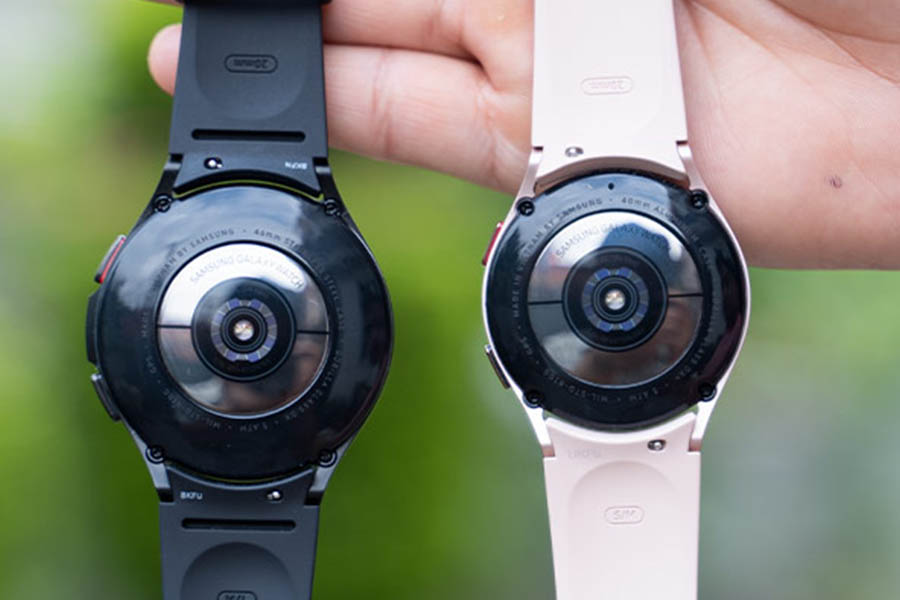
The younger generation might be favoring the sleeker, more colorful Watch 4, contrary to the bold look of the next best thing. And of course, the price difference between the two is further serving this cause. The 40mm Bluetooth-only Galaxy Watch 4 retails for $249 whereas you’ll need to shell out 100 bucks more for the 42mm Bluetooth variant of the Watch 4 Classic.
There’s also an LTE-ready version of these smartwatches that cost even more. Besides the price, Samsung is sticking to its roots with the design language of these smartwatches.
Familiar form factor
Yeah, you’re only getting one big thing at a time—and that’s perfectly okay. Samsung is better off sticking to this tried-and-tested form factor rather than trying to do anything different. Interestingly, the company has managed to make the Watch 4 Classic marginally more compact and lighter than last year’s Galaxy Watch 3.
But the difference I’m talking about is too minuscule to deliver any palpable advantage. By default, these smartwatches ship with fluoroelastomer soft silicone bands—but with a slight contrast. You see, while the standard Watch 4 does have a buckle at one end, it is inspired by sports bands on an Apple Watch because of its inward looping mechanism.
On the other hand, the Watch 4 Classic hosts a traditional strap watch-buckle design with two band retainers. Apart from this, Samsung also sells sports, stainless steel, and leather straps in select markets.
Oh, by the way, no matter which case size you end up getting, all of them accept 20mm universal straps. Anyway, I’ve had no issues like skin irritation or allergy when putting on the Watch 4 and Watch 4 Classic throughout the day. The re-engineered strap is sweat-resistant as well so cleaning it off after workouts is as easy as they come.
Looks a bit weird
Still, I must say I was weirded out by the significant gap left by the watch on the sides when wearing it. This is an intentional and crucial design choice to ensure firm contact of the sensors with one’s wrist, I know—but I can’t help but feel how this makes the Watch 4 seem bulkier than it should.
Regardless, the Watch 4 series is 5ATM and IP68 certified for dust and water damage. So, you could be deep diving in a swimming pool or running in the rain without a care in the world. These smartwatches also get MIL-STD-810G certification against shocks, vibration, extreme temperatures, etc.
Redesigned buttons
Moving on, the buttons on the side also get a fresh redesign this time around. While last year’s Watch 3 had circular buttons, the ones on this iteration are wide and rectangular-shaped. And there’s a good reason behind this. You see, one of the breakout features in the Watch 4 series is body composition analysis.
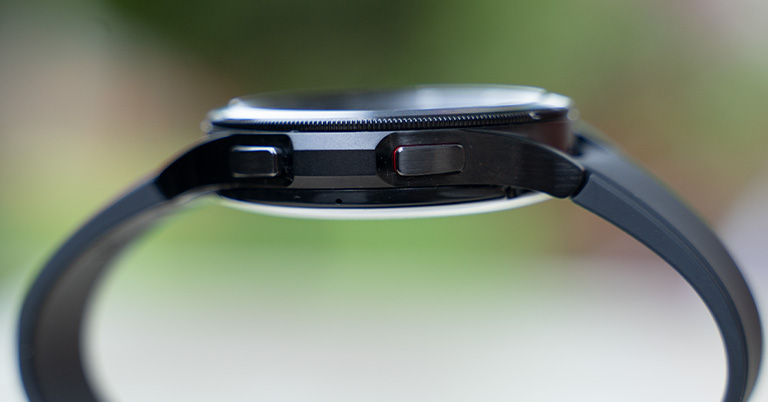
For this, the electrodes required for the 3-in-1 BioActive sensor are extended to the buttons as well—apart from the one on the bottom. On top of this, you can customize these buttons to trigger different actions. A single tap of the home button takes you to the homescreen while Samsung lets you set custom actions for double and long-press actions.
Likewise, the back key can be configured to go back to the previous screen or list out the recently opened apps. Over on the left, you can find the speaker grille for making phone calls from the watch itself—or play onboard music files. And I don’t think any review of the Samsung Galaxy Watch 4 and Watch 4 Classic can pass by without talking about their varying bezels.
Physical vs digital bezel
As you could probably already tell, the physical rotating dial on the Watch 4 Classic is easily the superior of the two. From the excellent tactile feedback to the sheer fun of using it, there just isn’t anything like the rotating bezel. On the other hand, its digital substitute on the standard Watch 4 simply doesn’t match the experience of the physical one—while also being finicky at times.
Display
- 1.2/1.4-inches Super AMOLED panel
- Circular dial, Always on Display (AoD)
- Gorilla Glass DX/DX+ protection
Moving to the display, Samsung lets you pick between a 1.2 or a 1.4” Super AMOLED screen for the Watch 4 series. Even though the size options remain the same from last year’s Watch 3, the company has brought a visible upgrade in terms of the display’s sharpness.
Contrary to the 360 by 360 pixels resolution in its predecessor, Samsung has bumped it to 450 x 450 on the bigger 44/46mm and 396 x 396 pixels on the 40/42mm cases. Personally, I had no visibility trouble with the Watch 3, to begin with.
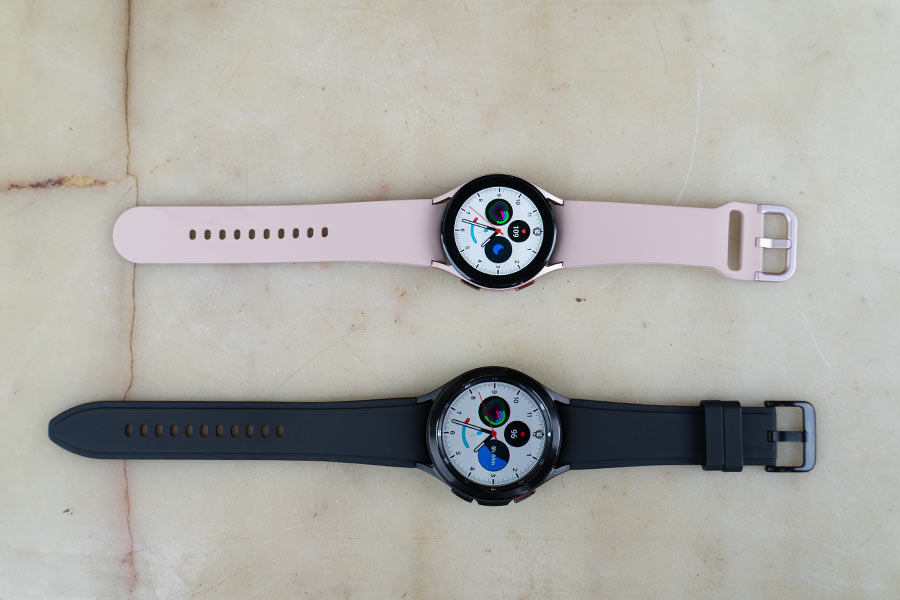
So, the higher pixel count feels all but a reassuring move. Nevertheless, the Watch 4 and Watch 4 Classic enjoy different protection standards. The flatter of the two is expectedly safeguarded with Corning’s Gorilla Glass DX+ which brings enhanced protection from damaging impacts on top of improved readability and scratch resistance.
Makes sense because since the Watch 4’s screen doesn’t have an additional layer on top like the rotating bezel on the Watch 4 Classic, it is relatively more vulnerable to surficial impacts. In contrast, the Classic settles for the standard Gorilla Glass DX protection.
Expectedly top-notch
Anyway, as expected from a Samsung-made display, everything’s top-notch here. The colors look vibrant, punchy, and retain a great contrast ratio. I can’t complain about its viewing angles or brightness levels either. Unlike different selectable levels of brightness on the Watch 3, this Wear OS iteration offers you a brightness slider instead.
It also supports auto-brightness adjustment which works perfectly fine. This OLED panel lets you turn on Always on Display as well. But since the raise/tap to wake actions work like a charm, I didn’t really bother turning on AoD. That, added with the battery-consuming properties of Always-on Display makes my decision all the more simple.
In terms of watch faces, the ones built-in come in different themes—serving different visual aesthetics. I’m quite fond of the one called “Time-Lapse”. It is textbook minimalistic and shows all the info I need. Plus, I like how its color scheme changes depending on the time of the day.
Besides all this, there’s a mountain of customization options. From color scheme, UI layout, components, to setting custom images, the Watch 4 series is a treasure trove for those who love personalization. And if you’re not a fan of the watch faces that come pre-installed, its Wear OS heritage means you can download from hundreds of watch face apps on the Play Store like Facer, Moods, etc.
Performance
- Dual-core Exynos W920 SoC (5nm)
- Wear OS Powered by Samsung
- 1.5GB RAM + 16GB internal storage
Now, while the design and display side of things sounds fairly familiar, the performance department is where the hyped upgrades really take shape. And if you think about it, the Watch 4 series will even feel like a couple of first-gen products in terms of their performance.
A reimagined operating system complemented by a brand new processor—I mean, there are multiple reasons to be skeptical of how these smartwatches are gonna perform.
But putting those doubts to rest, the Galaxy Watch 4 series has performed with flying colors throughout my usage. Let’s first discuss the chipset itself. Powered by the company’s in-house Exynos W920 SoC, Samsung is promising a significant performance jump compared to the Exynos 9110 powering Watch 3, Watch Active 2, and the first-gen Galaxy Watch from back in 2018.
Brand new processor
The first 5nm silicon of its kind, Samsung says you can expect a 20% better CPU and a tenfold superior graphics performance from this chipset. Furthermore, the Watch 4 series is paired with 1.5GB of RAM and 16GB of internal storage—up from 1GB RAM, 8GB memory on its predecessor.
All of this combines to deliver a pretty smooth user experience. And maybe it’s all these hardware reforms, the new operating system, or both, there’s a noticeable fluidity if you’re coming from Tizen-powered Galaxy Watch 3.

I mean, the responsiveness is there but this is by no means a lag-free smartwatch. And that’s primarily because of how Samsung is insistent on implementing such heavy animations here. But thanks to the new Wear OS platform, you can scale down the animation level inside Developer Options—something that was sorely missing in Tizen OS.
Okay, I feel like I’ve teased talking about Wear OS for a while now—so let’s finally get into it. Like I mentioned in the beginning, Wear OS 3 has been co-developed by Google and Samsung, with the latter committing to abandon Tizen OS in favor of this new platform for its upcoming smartwatches.
The best of both worlds
Feels like the best of both worlds, isn’t it? While Wear OS smartwatches have been historically lacking that “Midas touch”, Samsung’s Tizen OS faced criticism for its walled garden of app selection. But now, the merger of the two platforms means these arguments are going to be moot—hopefully. That’s mainly because of the first-gen nature of these smartwatches that I mentioned earlier.
A lot of promises that Google made during the announcement of the new Wear OS are still absent for now. The most notable of them has to be the Fitbit health services. With Google’s Fitbit acquisition finally done and dusted, its integration into Wear OS means the new platform could be a proper fitness-focused smartwatch—on top of all the bells and whistles.
I was absolutely floored with all the health-tracking features available on the Fitbit Versa 3 that I reviewed a while back, with stuff like Active Zone Minute (AZM) especially standing out. Google says it’s arriving in Wear OS 3-powered smartwatches when they launch H2 2022, but Samsung hasn’t pledged anything on the matter.
Samsung Health Services works perfectly fine
I guess I can understand why the company would want to stick to its own Samsung Health services for fitness tracking features. It’s well rounded, and with the new health-tracking abilities on the Watch 4 series, these smartwatches are on track to being some of the most capable fitness trackers on your wrist.
Still, a guy can hope. Google Assistant’s a no-show either, although Samsung says it’s arriving sometime later on. For now, you’re gonna have to make do with Samsung’s Bixby. It can handle simple requests like translation, web searches, weather reports, making phone calls, etc. just fine while something like sending SMS to your phone’s contact is only available on Samsung smartphones.
Some Samsung exclusivity
That brings me to the next topic. Despite a supposed unified platform, some features of the Watch 4 series are still restricted to Samsung phones. And oh, it is straight-up incompatible with iPhones and HMS-powered Huawei phones.
Health tracking features like ECG and blood pressure measurement aren’t available in other Android smartphones. The former requires you to install the Samsung Health Monitor app that’s exclusive to Samsung’s Galaxy Store. And no, sideloading the APK file doesn’t work.
Talking about apps, Samsung smartwatches finally have access to Google Play Store under the Wear OS platform. Well, that’s not entirely true because the Galaxy Gear Live from 2014 indeed ran on Android Wear. But since then, the South Korean conglomerate had been shipping Tizen OS in its smartwatches.
I can finally use Google Maps on a Galaxy Watch!
Anyway, with Play Store support, I can finally use Google Maps on a Galaxy Watch. From its positional accuracy to the seamless turn-by-turn direction guidance, it’s amazing.
Other personal favorite apps that I can now have on a Galaxy Watch include Google Keep and Messages. At launch, Spotify in Watch 4 series didn’t support offline playback but with a recent, I can now download my playlist into the smartwatch itself. Mind you, roughly only 8GB of the onboard 16GB storage is usable. Plus, the Spotify-downloaded tunes aren’t playable on the watch itself, unlike other locally stored audio files.
But you can connect the watch to a pair of Bluetooth earbuds so that you don’t need to carry around a smartphone whenever you’re out jogging and want to listen to some music. Samsung’s Microsoft partnership is seen on the Watch 4 series as well since they come pre-installed with Outlook on top of all the stock Samsung apps.
One UI on top of Wear OS
In order to make sure that previous Galaxy Watch owners don’t get lost when shifting to the new platform, the Watch 4 and Watch 4 Classic get a One UI skin on top. And for the most part, all the UI elements look similar to the way they do on a Tizen smartwatch.
Swiping down gets you to access the control panel while the left and right edges hold the notifications and the widgets (or Tiles as they’re called in Wear OS), respectively. The only major visual change is that swiping up from the homescreen now hosts the app launcher.
You can re-arrange them from the watch itself or via the Galaxy Wearable app. As expected, the incoming notifications on the Watch 4 series are actionable and it supports Nepali Unicode font, as well as emojis. You can reply by typing up the message, using text-to-speech, or even from a collection of customizable quick replies.
Weirdly enough, the Samsung Keyboard that comes by default doesn’t support swipe typing so I had to switch to Gboard. Thank you Play Store, once again!
Decent haptic feedback
I’m quite fond of the haptic feedback on the Watch 4 series as well. The vibration feedback is strong enough to alert me of any notifications. Still, I wished that there was a middle ground between the “Light” and “Strong” vibration intensity that Samsung lets you pick between. To compare, the Apple Watch Series 6 does haptic feedback right.

All in all, I’m absolutely enjoying the Wear OS 3—oops, “Wear OS Powered By Samsung”—experience on the Watch 4 series. Google Play Store support complemented with Samsung’s UI optimizations is absolutely what the Android smartwatch space needed, and I’m glad it’s finally happening.
Health, Fitness Tracking
- 95 workout modes with automatic detection of 6
- Body Composition Analysis, SpO2, Sleep tracking
With that out of the way, allow me to talk about the health and fitness-tracking abilities of the Watch 4 series. Why not start with the breakthrough feature of these smartwatches, huh? Another first-gen feature in a Galaxy Watch (or any other smartwatch for that matter) debuting with these devices is “Body Composition” measurement.
This is thanks to the new 3-in-1 BioActive sensor, which incorporates an optical heart rate, an electrical heart rate, and Bioelectrical Impedance Analysis (BIA) sensor. As a result, it can detect AFib irregular heartbeat, measure blood oxygen, blood pressure, and your body composition.
Remember what I said about the electrodes in the buttons—yes, that’s how the Watch 4 and Watch 4 Classic measure different metrics like body fat, skeletal muscle, body water, and Basal Metabolic Rate (BMR). Typically, you’ll need a body composition scale or a skinfold caliper to measure your body fat level.
Compared to the electrodes on the underside and the buttons of the Watch 4 series, such body fat scales have way larger electrodes to read your body composition via your feet. So, it’s only normal to be skeptical of the BIA analysis of these smartwatches.
But Samsung assures that it hasn’t sacrificed the accuracy of these sensors. So much so that it claims that the results from this BioActive sensor have a 98% correlation with DEXA scans, which is apparently the most reliable way for measuring body composition. While I couldn’t test out those claims, I compared against the next best thing—sort of.
How does the body composition analysis hold up?
For this review, I compared the BIA of Samsung Galaxy Watch 4 and Watch 4 Classic against the Huawei Smart Scale. And the results from the Watch 4 series were… unflattering, to put it gently. On average, the Watch 4 gave 20% higher body fat readings than the Smart Scale. On the other hand, this smartwatch measured my body water, BMR level 6% and 3% lesser compared to the body fat scale, respectively.
While the Huawei Smart Scale is by no means the gold standard for measuring body composition, I am inclined to trust its measurements more compared to Watch 4’s readings. Additionally, since you gotta update your weight every time you’re going to take a reading, measuring body composition from the Watch 4 series isn’t as instantaneous or seamless as Samsung has painted it out to be.
From my findings, I guess you can use its readings as reference values for minor adjustments in workout schedules, diet plans, but even Samsung says the Watch 4 and Watch 4 Classic aren’t a substitute to professional-grade medical equipment—despite drawing comparison to one.
No continuous SpO2 monitoring
Apart from this, the Watch 4 series can track everything from step count, sleep, women’s health, blood oxygen saturation, and stress levels. You can set the watch to record heart rate and stress levels continuously or manually. But I am a little disappointed to see that continuous SpO2 monitoring is only available during sleep, and not throughout the day.
Maybe an update can fix this but I doubt Samsung will bring one, keeping battery endurance in mind. During the review, I compared the SpO2 readings from the Samsung Galaxy Watch 4 and Watch 4 Classic to Apple Watch Series 6. Here, I found that the SpO2 readings from all these smartwatches were almost identical—with about 2% deviation on average. Moving on, you can also have the watch send you alerts in case your heart rate goes higher or lower than the predetermined value. Nice!
Watch 4 series has sedentary reminders as well but I found it to be rather ill-implemented. Time and again, I’d get notifications to get up and walk for a couple of minutes. But this one time, I ignored the alert and had to rub my eyes instead. To my surprise, Watch 4 congratulated me on getting active. I’ll be damned if that was sarcastic in any way!
Sleep monitoring could use some work
Sleep tracking on the Watch 4 series has been pretty accurate for the most part too. It gets my time to bed and the time I wake up almost spot-on. Like last year, there’s also a sleep score to help you analyze your sleep quality more easily. Yet, in a couple of instances, I noticed that the watch overcompensated the time I woke up.
I have a habit of using my phone for a while before I go about my morning hygiene routine. And in a couple of occasions, the Watch 4 failed to record my actual time out of bed and included the time I spent using my phone on the bed under that day’s sleep detail—which was not the case with Watch Series 6.
As a result, this adds an unnatural amount of awake time to my sleep schedule, thereby messing up with the overall sleep score. But to reiterate, this wasn’t a daily occurrence and I hope Samsung fixes this issue with an update pretty soon.
Blood pressure, ECG monitoring still isn’t available everywhere
Besides this, the Watch 4 series can track your blood pressure and ECG levels as well, although it is limited to 40 countries for now. Unfortunately, regions like Nepal and India miss out on both of these features.

Nevertheless, these smartwatches are capable of tracking up to 95 different workout modes including running, cycling, swimming, hiking, and more. It can also detect 6 of them automatically—while also being able to record location on walking/running exercises. And in this regard, everything works perfectly fine here. The GPS lock is fairly immediate although I do wish the auto workout detection worked a little faster.
Throughout my tests, I noticed that it took an average of 10 minutes for the Watch 4 to detect my walking workout. Plus, if you wish to end the workout right there, that’s not possible as the watch makes you wait a couple of seconds more before terminating the workout. Auto-pause and auto-resume work flawlessly, so that’s something.
You can view the workout details on the watch itself or in the Samsung Health app on your phone. All the data are presented in an easy-to-read layout, which is great. I had no trouble with syncing my watch data to the app either.
Compared to the Apple Watch Series 6, the health data recorded by these two smartwatches are quite similar in terms of heart rate levels. However, they differ by quite a margin in terms of factors like calories burnt, distance covered, etc. Also, I found that the Watch 4 series delivered better insights, metrics of your workouts compared to the competition.
Daily Activity to keep you motivated
Furthermore, the Watch 4 series also features Daily Activity—similar to Activity Ring on the Apple Watch Series 6. This consists of steps, active time, and activity calorie goals to motivate you to keep active throughout the day.
Samsung is also debuting something called “Together” with the Watch 4 lineup where you can challenge your friends and family on a real-time walking exercise challenge. The contest gets two metrics to indicate win/loss: the total number of steps taken, and the first person to hit the targeted step count.
While this is pretty impressive, I wish the Together challenge expanded to other factors like body composition, calories burnt, etc. as well.
These can even monitor your snoring habits. For this, you’re required to put your smartphone to your side, while it’s charging throughout the night. I don’t snore and thus couldn’t test it out—but I do wish it didn’t require you to charge the phone overnight.
Battery
- 247/361mAh battery, Up to 40 hours
- WPC-based wireless charging support
Getting to the battery side of things, Samsung says all entries in the Watch 4 series are rated to last for up to 40 hours. Here, the smaller 40 and 42mm versions ship with a 247mAh battery whereas the bigger 44 and 44mm cases feature a bigger 361mAh battery instead. Throughout my usage, I’ve managed to net out a similar level of battery endurance from these two smartwatches.
Using the Watch 4 Classic with AoD turned off, brightness and WiFi set to auto, and about 20 – 30 minutes of GPS usage, the 46mm variant easily lasted me for one and a half days on average. This usage also consisted of at least a couple of dozens of notifications throughout the day and a couple of phone calls as well.
Call quality
About the call quality itself, there’s little to complain about. People at the receiving end didn’t have any trouble hearing me, although I can’t say the same about their voice.
I mean, there’s nothing wrong with the actual call quality itself but the audio from the speaker grille comes out a bit noisy. Anyway, the 40mm Watch 4 that I have, gave an almost identical battery life—that sometimes even extended to 2 days. But here, I’d turned off WiFi altogether while skipping on any GPS use.
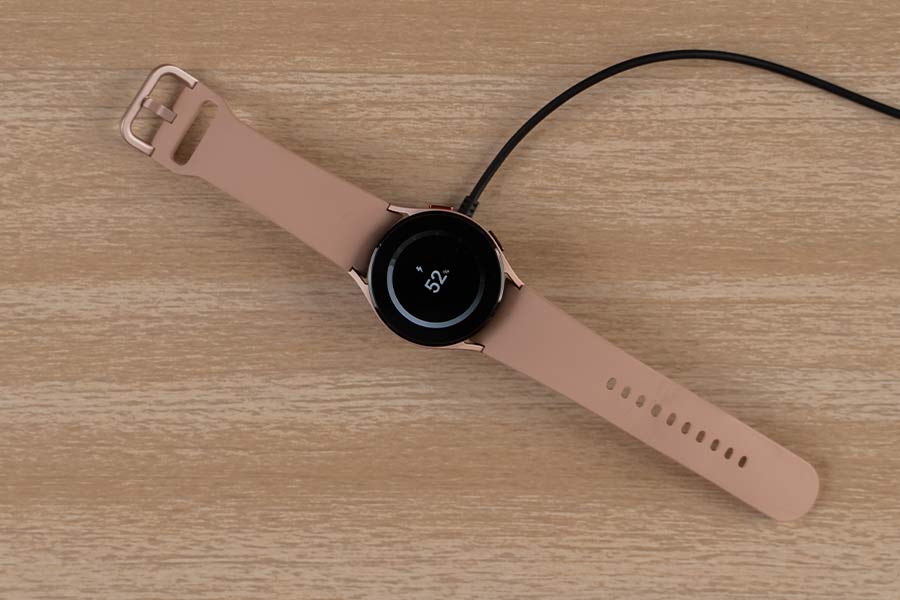
On the charging front, Samsung’s new-gen smartwatches still disappoint. The Watch 4 lineup sticks to the same old 5W WPC-based Qi wireless charging that takes a little over 2 hours to go from 0 to 100%. The base of the watch sticks quite firmly with the charger, so no problem there. But having to wait 2 whole hours to juice up the battery is pretty annoying.
Samsung Galaxy Watch 4, Watch 4 Classic Review: Conclusion
Wrapping up this review, the Samsung Galaxy Watch 4 and Watch 4 Classic are undeniably the best thing to happen to the world of Android smartwatches in recent years. Samsung’s masterful hardware and elegant software design paired with Google Play Store compatibility make for a pretty amazing smartwatch experience.
So, if you have an Android smartphone and want the absolute best smartwatch money can buy, it simply doesn’t get better than Galaxy Watch 4 and Watch 4 Classic for now. Well, the Watch 4 Classic mostly. Yet, if your phone isn’t Samsung-made, you’re gonna have to make peace with missing out on a couple of features like blood pressure and ECG reading.
- Watch our video review of the Samsung Galaxy Watch 4, Watch 4 Classic.
Samsung Galaxy Watch 4, Watch 4 Classic Review: Pros & Cons
Pros:
- Premium design on a circular dial
- 5 ATM, IP68 dust/water resistant
- Excellent Super AMOLED display
- Comparatively fluid performance
- Wear OS opens up new avenues
- Fairly strong haptic feedback
- Decent health tracking features
- Impressive battery endurance
Cons:
- Digital bezel on Watch 4 is finicky
- No iOS, HMS device compatibility
- Few features are Samsung-exclusive
- Sleep tracking needs some finetuning
- Body composition reading isn’t that reliable
- Extremely slow charging speed











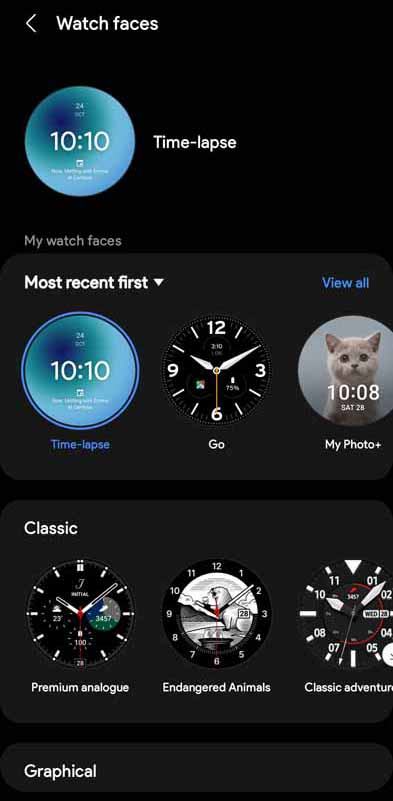
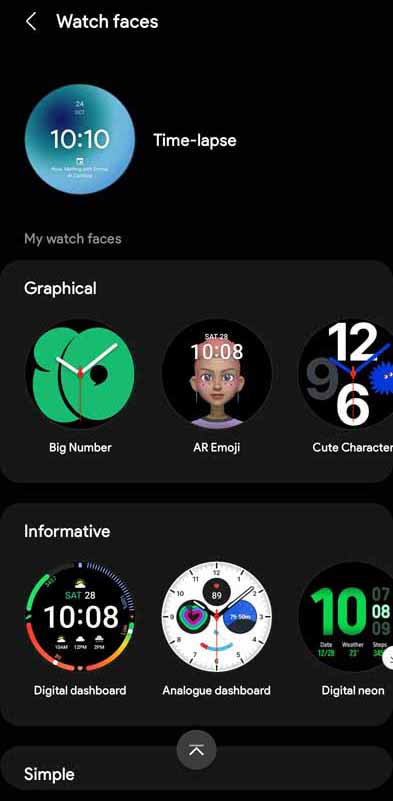
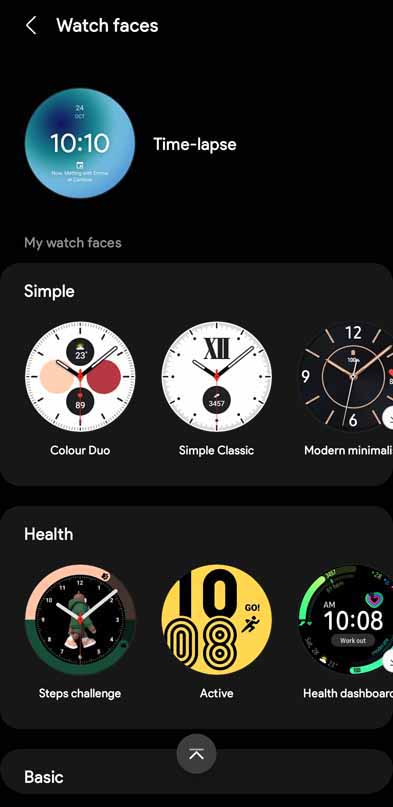
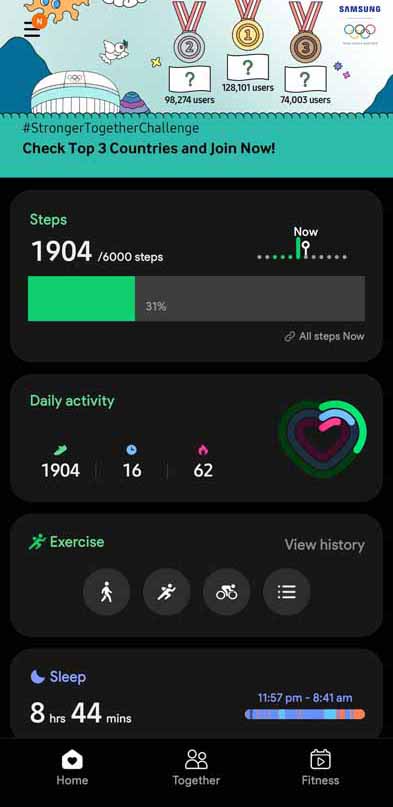
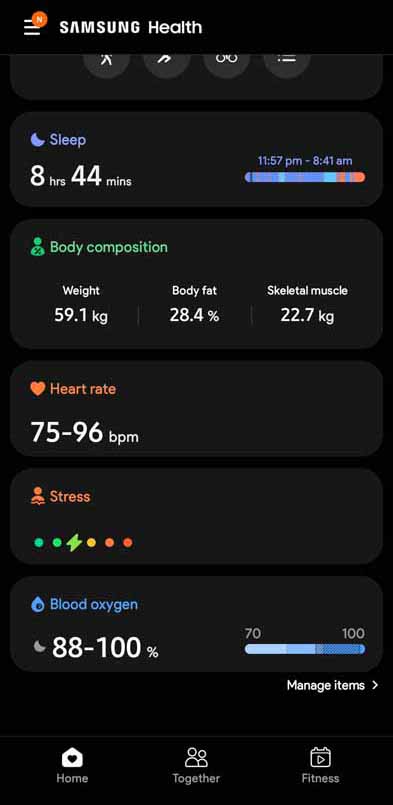
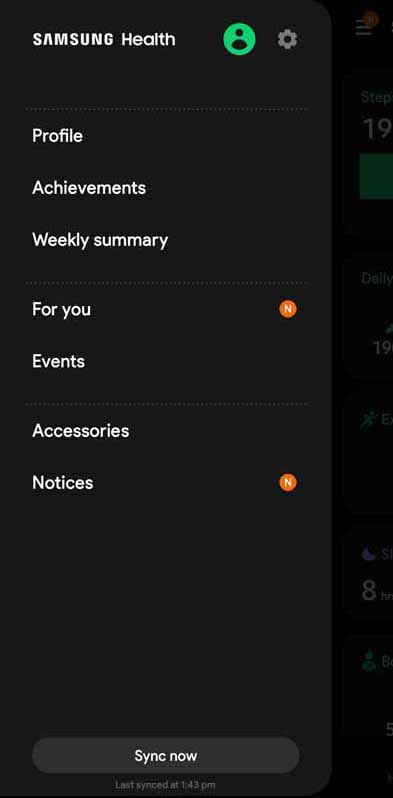
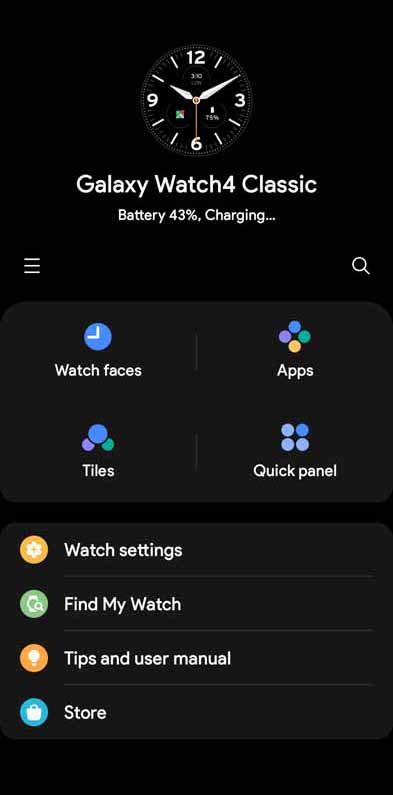
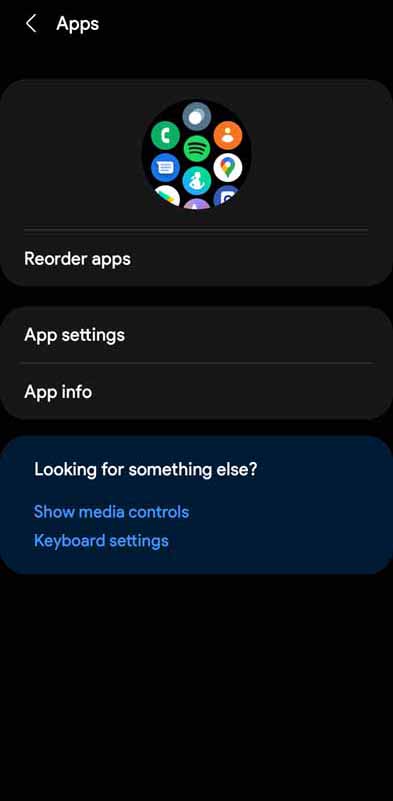

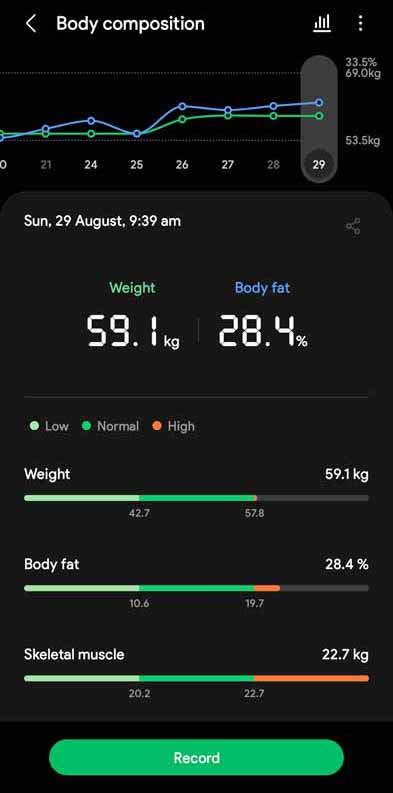
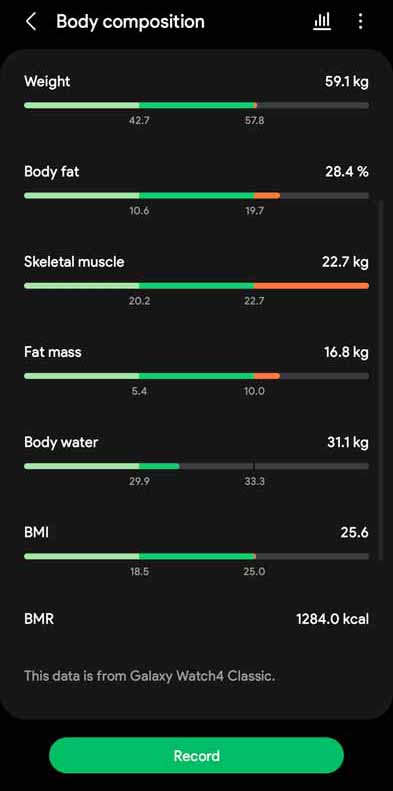


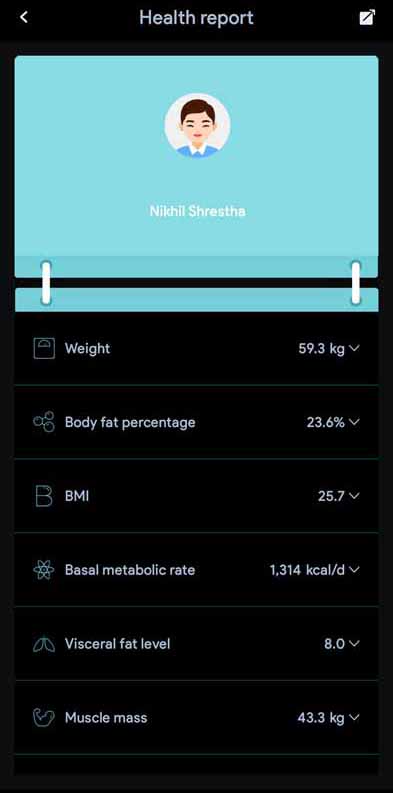
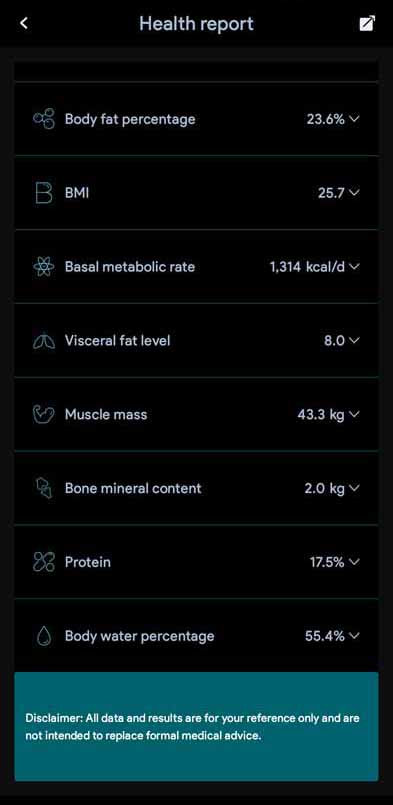
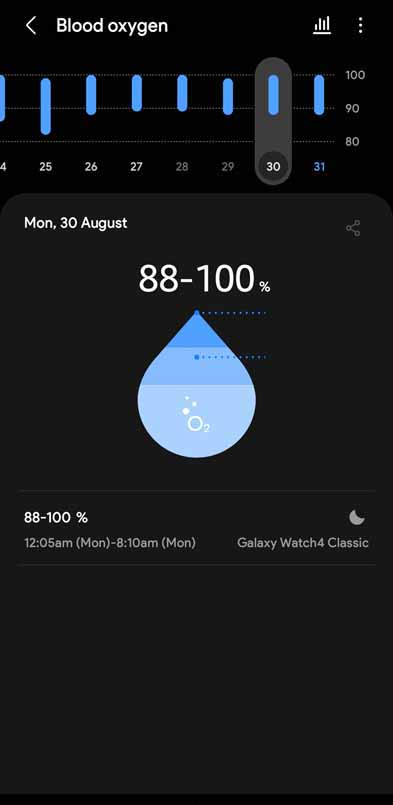

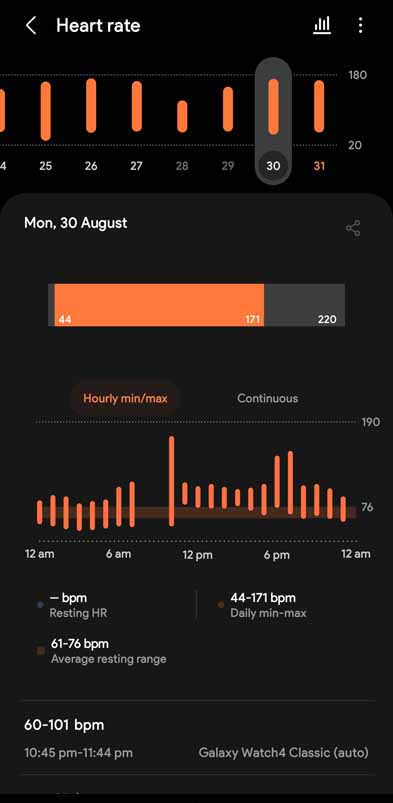
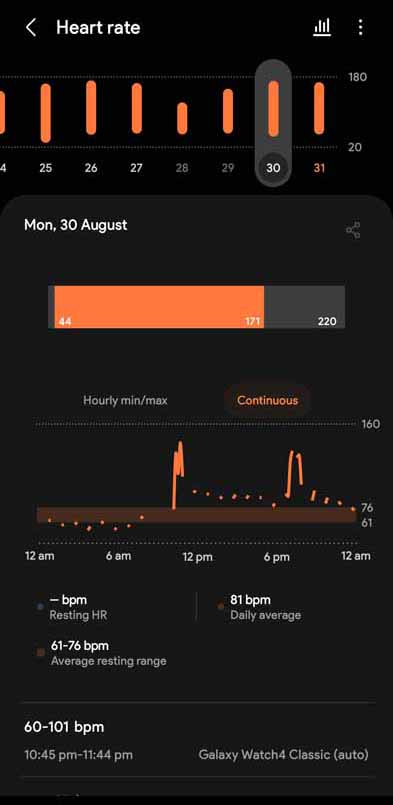
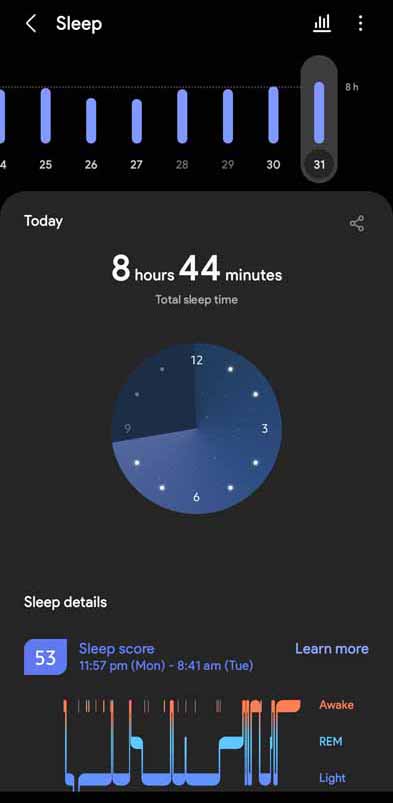
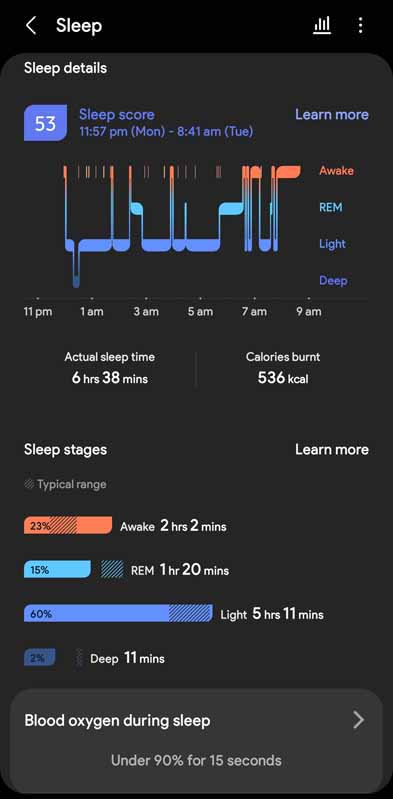
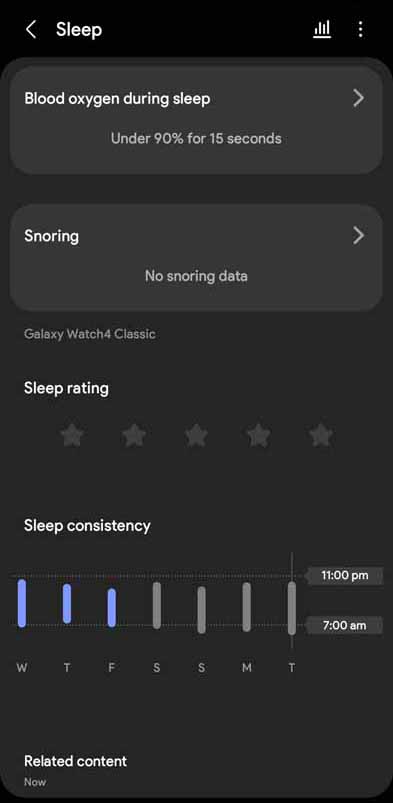

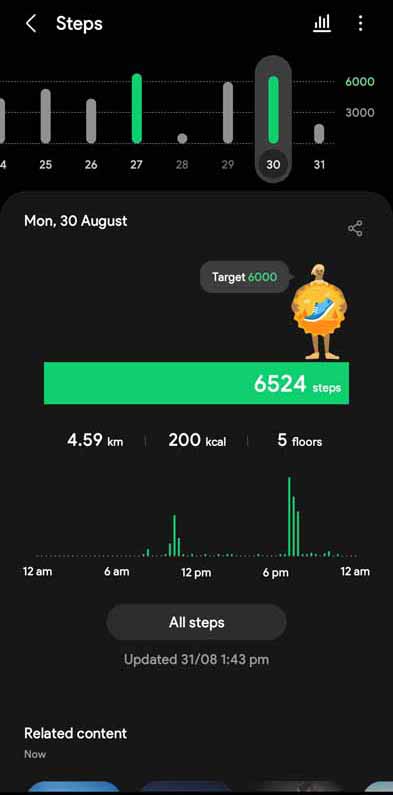


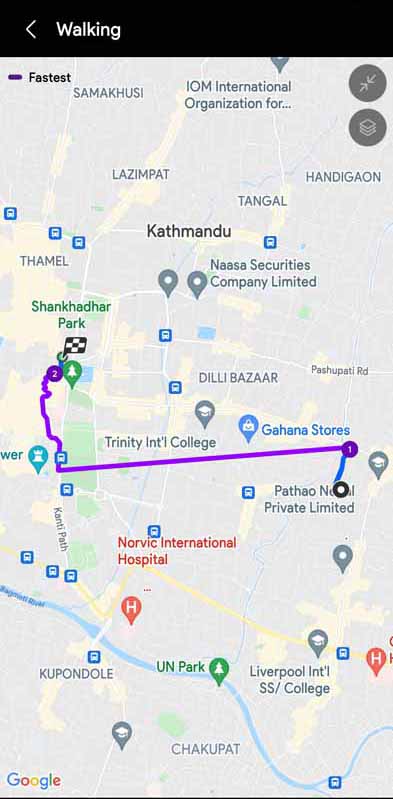

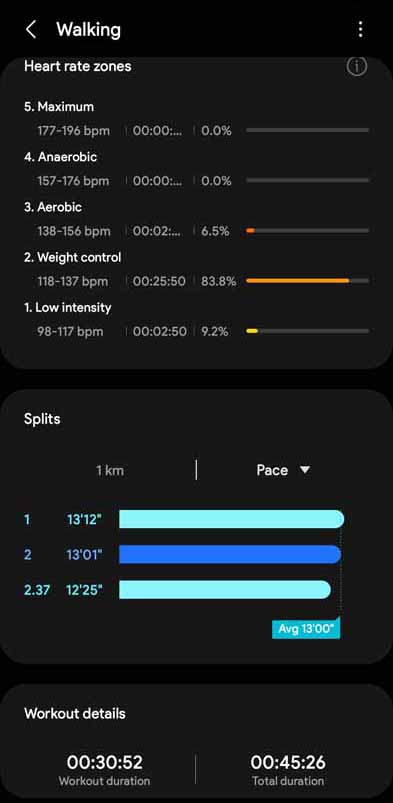
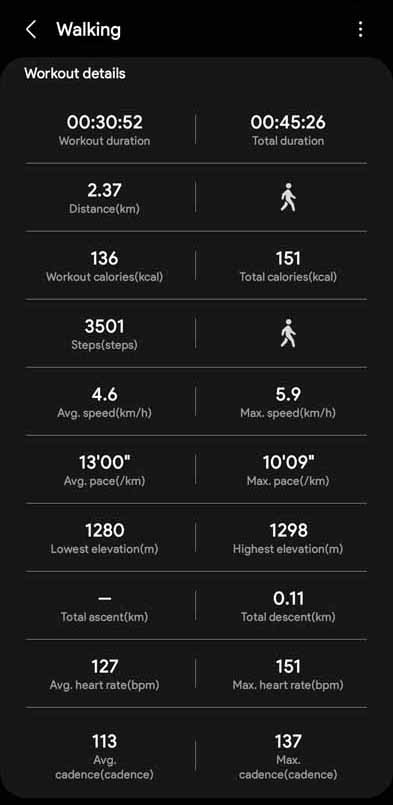

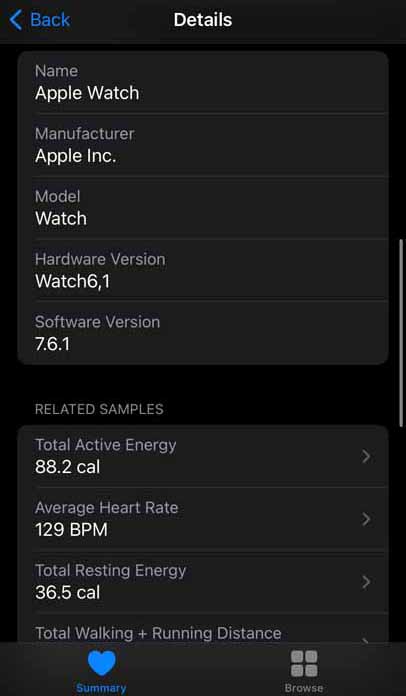
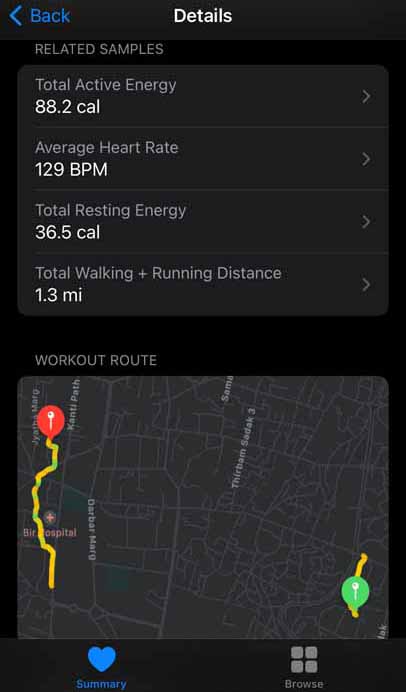
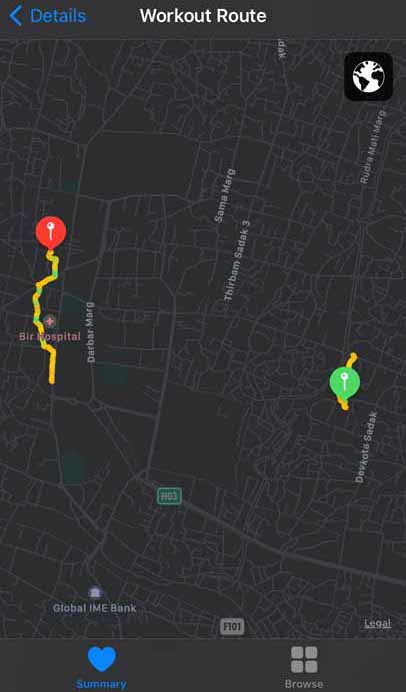

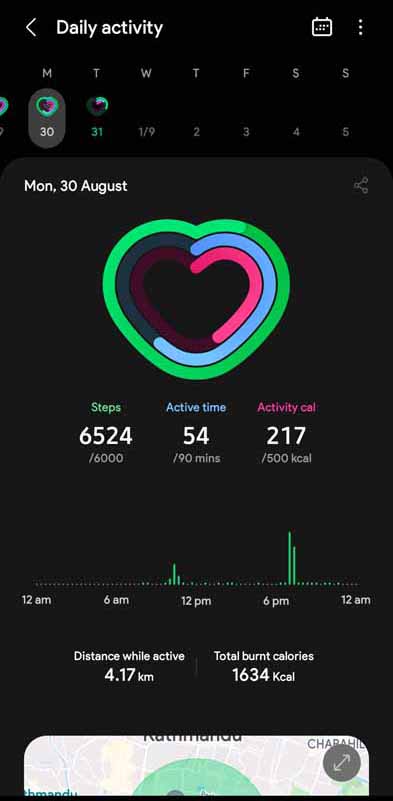
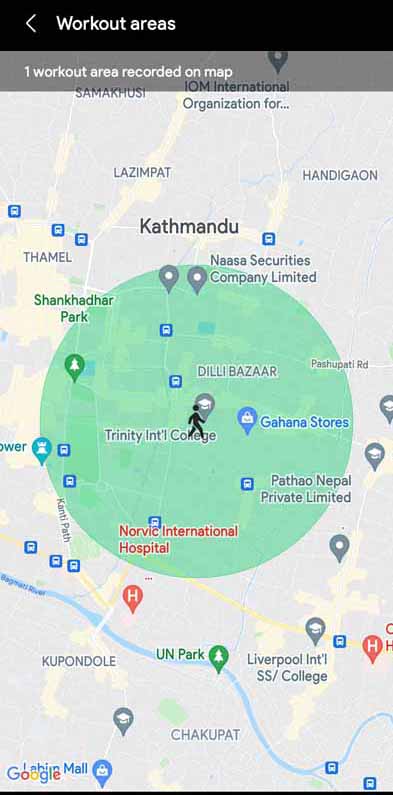
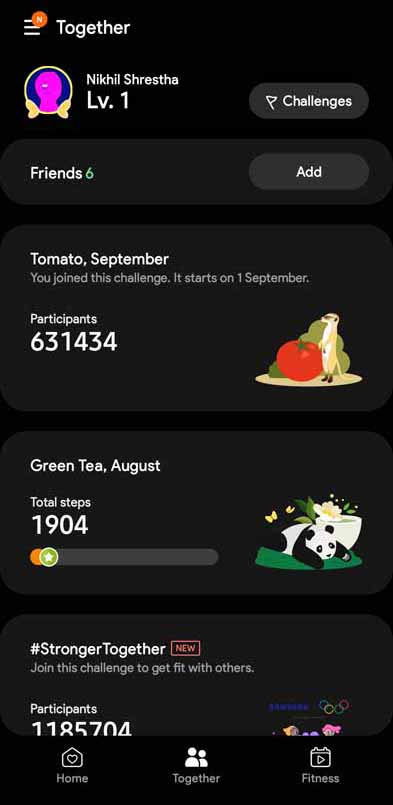
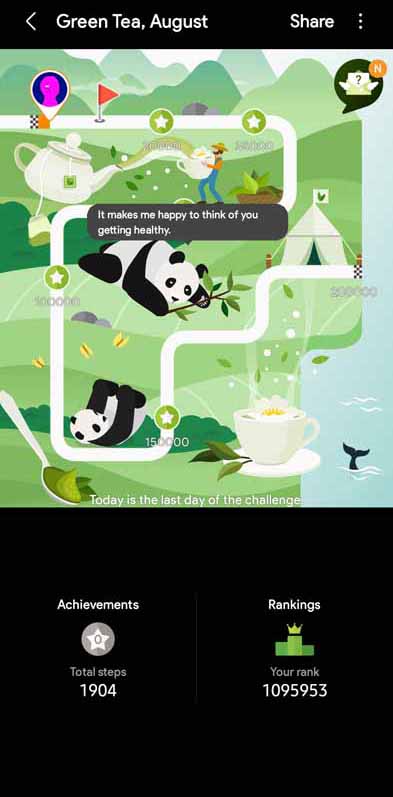









![Best Mobile Phones Under Rs. 15,000 in Nepal [Updated] Best Phones Under 15000 in Nepal 2024 Budget Smartphones Cheap Affordable](https://cdn.gadgetbytenepal.com/wp-content/uploads/2024/03/Best-Phones-Under-15000-in-Nepal-2024.jpg)
![Best Mobile Phones Under Rs. 20,000 in Nepal [Updated] Best Mobile Phones Under NPR 20000 in Nepal 2023 Updated Samsung Xiaomi Redmi POCO Realme Narzo Benco](https://cdn.gadgetbytenepal.com/wp-content/uploads/2024/01/Best-Phones-Under-20000-in-Nepal-2024.jpg)
![Best Mobile Phones Under Rs. 30,000 in Nepal [Updated]](https://cdn.gadgetbytenepal.com/wp-content/uploads/2023/12/Best-Phones-Under-30000-in-Nepal-2024.jpg)
![Best Mobile Phones Under Rs. 40,000 in Nepal [Updated] Best Phones Under 40000 in Nepal 2024 Smartphones Mobile Midrange](https://cdn.gadgetbytenepal.com/wp-content/uploads/2024/02/Best-Phones-Under-40000-in-Nepal-2024.jpg)
![Best Mobile Phones Under Rs. 50,000 in Nepal [Updated] Best Phones Under 50000 in Nepal 2024 Smartphones Midrange](https://cdn.gadgetbytenepal.com/wp-content/uploads/2024/02/Best-Phones-Under-50000-in-Nepal-2024.jpg)
![Best Flagship Smartphones To Buy In Nepal [Updated] Best Smartphones in Nepal 2024 Flagship Premium Samsung Apple iPhone Xiaomi OnePlus Honor](https://cdn.gadgetbytenepal.com/wp-content/uploads/2023/09/Best-Smartphones-in-Nepal-2024.jpg)